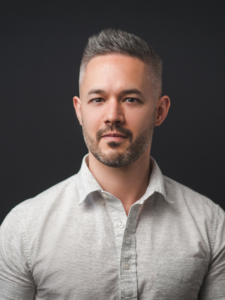OCTOBER 1, 2023
KLUXEN – RAVEL AND HAYDN
Found primarily in South Africa’s Merensky Reef but also in the vicinity of Sudbury, Ontario, platinum is one of the world’s rarest metals—and one of its most useful, too. It’s uncommon because it forms only under incredibly specific conditions deep within the earth’s crust, and it’s sought after for a variety of equally specific purposes. Its resistance to corrosion, which rivals that of gold, makes it ideal for use in precision electronics, laboratory equipment, and catalytic converters; that, plus its malleability, also finds application in jewellery.
So why are we talking about platinum in the context of symphonic music? Because the same qualities that make it resistant to tarnishing and relatively easy to work with also make for a very, very fine flute, and a very expensive one. As of last spring, the list price for a handmade William S. Haynes platinum flute was $80,000 U.S. dollars. That’s a pittance compared to what a genuine Antonio Stradivari violin would command, but it would still amount to a sizeable deposit on an oceanfront condo in James Bay.
As the youngest member of the Victoria Symphony, 23-year-old flutist Arin Sarkissian does not yet possess his own platinum Haynes, but he does take some pride in knowing that his relatively humble gold-and-silver model was built by the same company that furnished 20th-century flute megastars Jean-Pierre Rampal and Georges Barrère with their concert instruments. And the connection is especially pertinent given that Sarkissian will depart from Victoria Symphony tradition to perform a solo piece, Edgard Varèse’s Density 21.5, written for Barrère and premiered by him in 1936. The title refers to the specific gravity of platinum—and, oddly enough given Varèse’s almost fanatically precise notation, it’s a bit misleading. Barrère’s flute was actually made by Haynes from a platinum-iridium alloy, with a specific gravity of 21.6.
Far more important, though, is that 21.5 was a truly groundbreaking work in 1936, and remains startling today.
“Varèse expanded flute technique far beyond what had been traditionally used,” Sarkissian explains. “First of all, the intervals are just sometimes jarring. Density 21.5 goes to piercingly high registers with almost obnoxiously loud dynamics. He also tried to capture a sense of polyphony, with multiple voices, through a piece that’s essentially just one instrument playing a monophonic line. And he brought elements of percussion to the flute, so he had notated under the piece to play it with exact rhythmic precision and tempo integrity. I associate that sense of calculation with percussion pieces, and I feel like a percussionist when I’m playing it. I’m constantly counting the metre in my head.”
Sarkissian’s other feature in this program, Carl Nielsen’s Concerto for Flute and Orchestra, allows the Toronto-born, Los Angeles–raised musician a chance to explore his instrument’s other side. Or, you could say, several of its other sides.
‘When I think of a conventional flute sound or archetype, I don’t think of the Nielsen concerto,” says the flutist. “I think of maybe a portrait of a bird, or something that is a little bit more lush, romantic, sensitive, or sensual. But this Nielsen piece really goes into all aspects of flute playing. It’s not just mere aesthetic perfection or elegance. There are these more intimate moments, but there are also desperate moments when it feels like he’s yearning for something, and there are random outbursts of fury, and there’s quirky little cute stuff that comes out of nowhere. I find his musical language very authentic, and it encompasses a wide, wide spectrum of all the human sensibilities.
“When you look at the orchestration, there are times when it seems like chamber music,” he adds, noting that the Concerto for Flute and Orchestra, which premiered at the Salle Gaveau in Paris in 1926, essentially grew out of an earlier work that Nielsen had written for his friends in the Copenhagen Wind Quintet. “I mean, there is dialogue back and forth, like between the flute and the clarinet; there’s also a moment where it seems like there’s a battle between the flute and the bass trombone. And then there are even percussive moments with flute and timpani. It really capitalizes on relationships between instruments in the orchestra, and it kind of delves into a playful take on orchestration rather than an innovative one. But, in essence, that playfulness was innovative.”
Sarkissian is obviously fond of the Nielsen concerto, and for good reason: he used it to good effect in the 2020 edition of the Montreal Symphony’s Concours OSM wind competition, which takes place every four years. “I got first prize, somehow, and was voted audience favourite,” he reports. “It’s a crowd-pleaser!”
The same could be said of Joseph Haydn’s Symphony No. 85 in B-flat major. Written for the Société Olympique, a Masonic organization active in Paris toward the end of the 18th century, it was reportedly admired by the ill-fated Marie Antoinette—hence its nickname, “La Reine.” Its Viennese effervescence is counterbalanced in this program by the reflective beauty of Maurice Ravel’s Le Tombeau de Couperin, an elegy not only for the great French composer François Couperin but also for several of Ravel’s friends who were killed during the First World War. It’s a serious piece, but not necessarily gloomy; as Ravel himself said, “The dead are sad enough, in their eternal silence.”
True, but then so too is something that Varèse famously wrote in a 1921 manifesto: “The present day composer refuses to die.”
Notes by Alex Varty



 Jean-Claude Picard, guest conductor
Jean-Claude Picard, guest conductor Arin Sarkissian, flute
Arin Sarkissian, flute